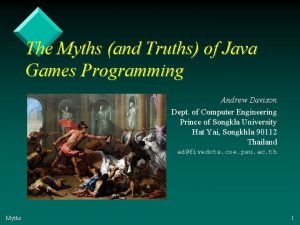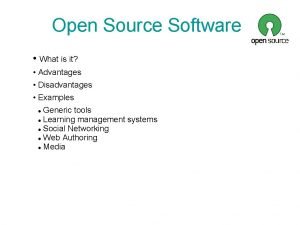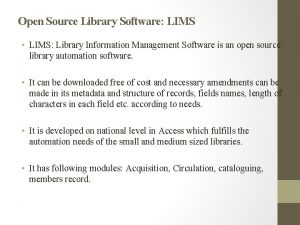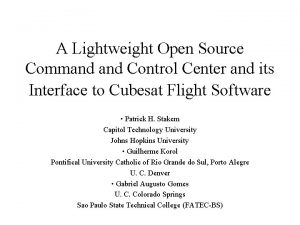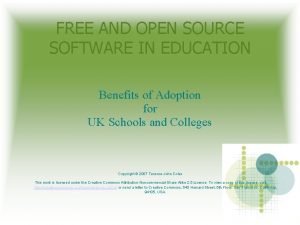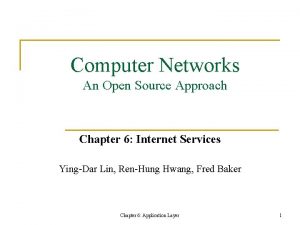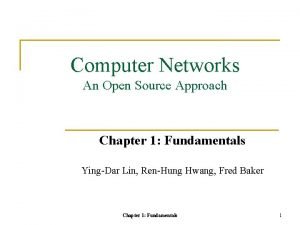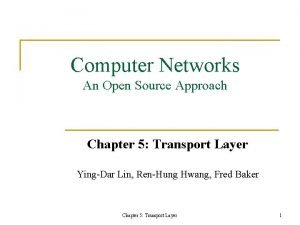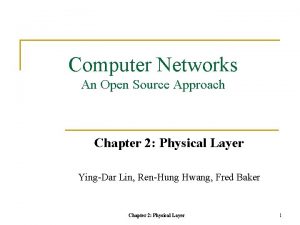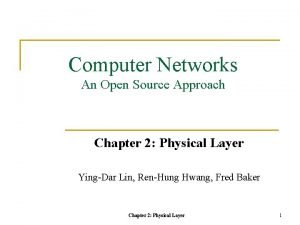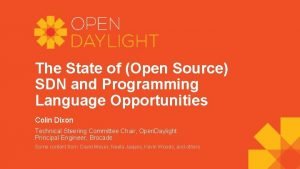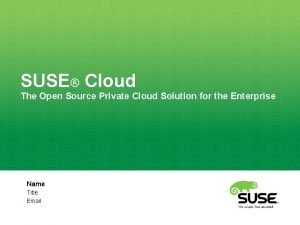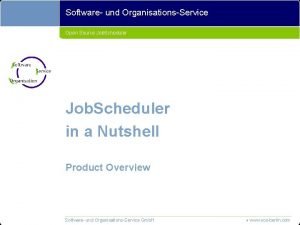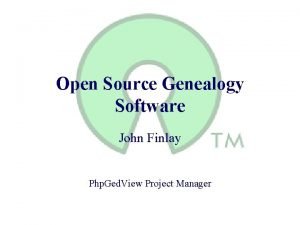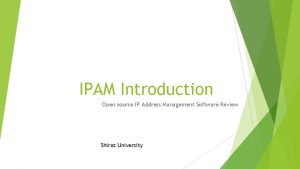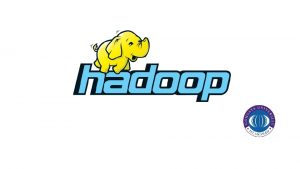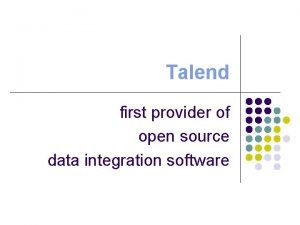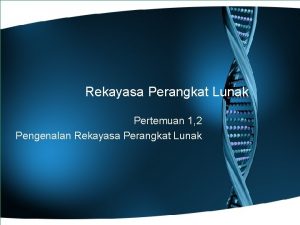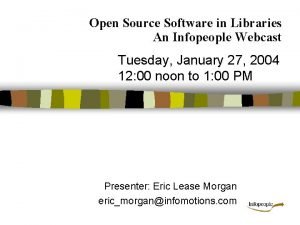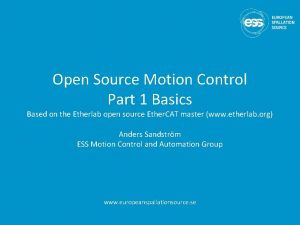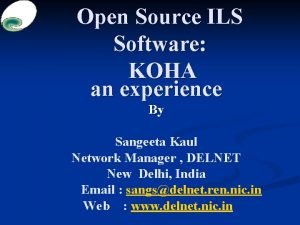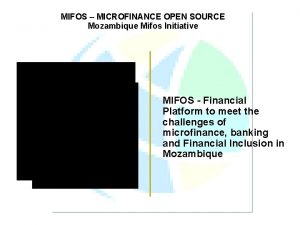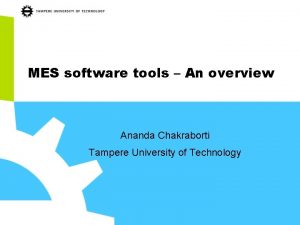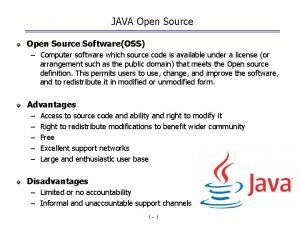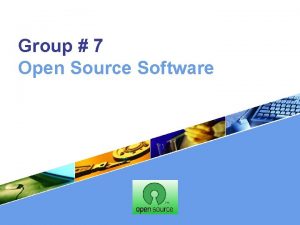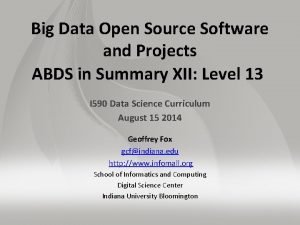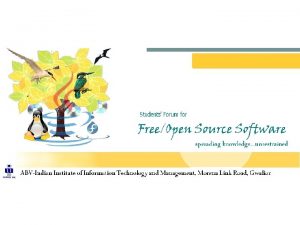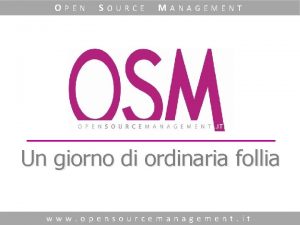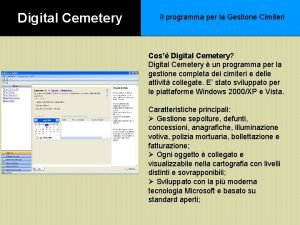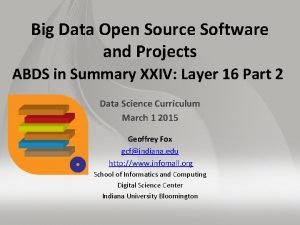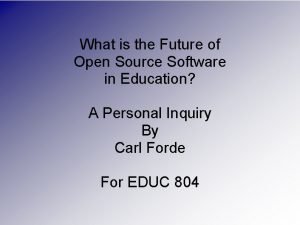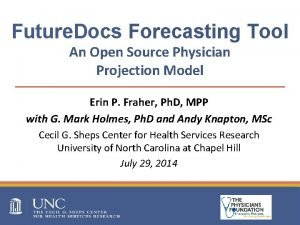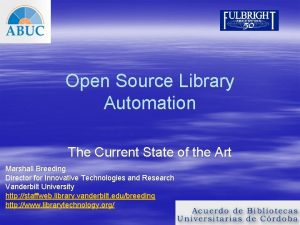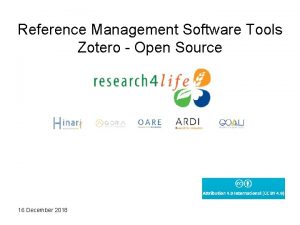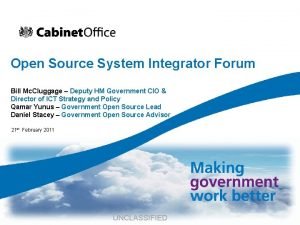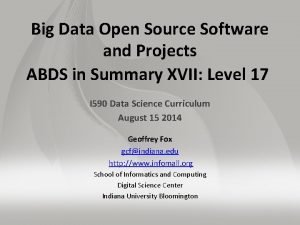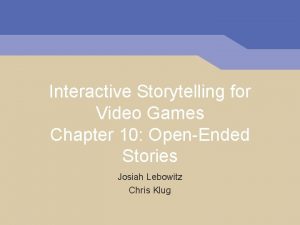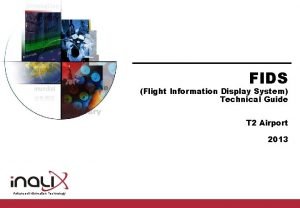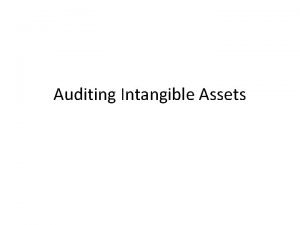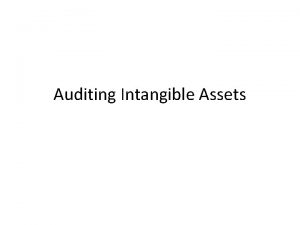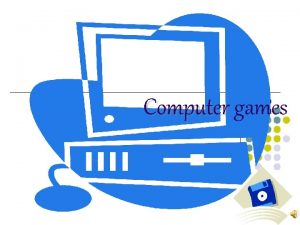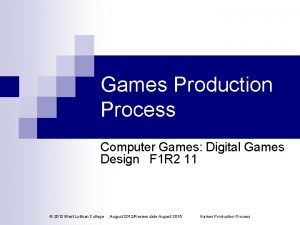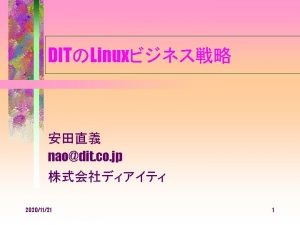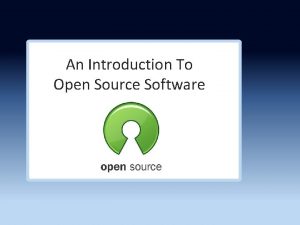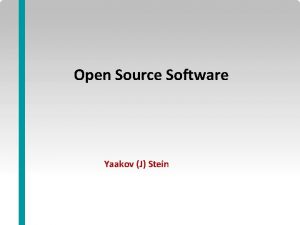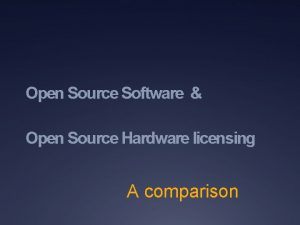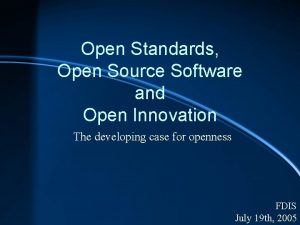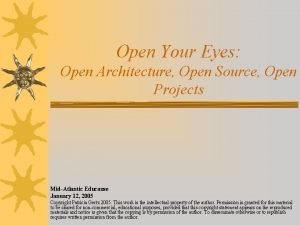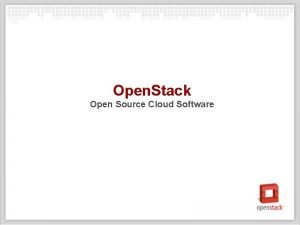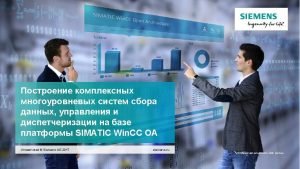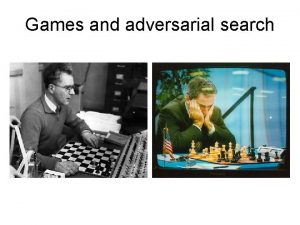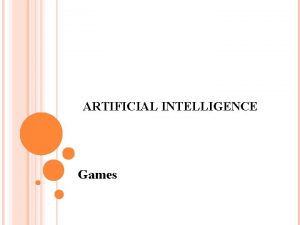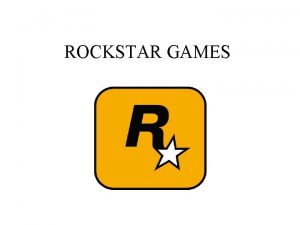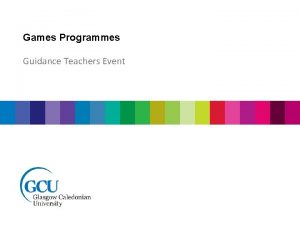Open Source Software Computer Games and other SocioTechnical











































- Slides: 43

Open Source Software, Computer Games, and other Socio-Technical Processes Walt Scacchi Institute for Software Research and Game Culture and Technology Laboratory University of California Irvine, CA 92697 -3425 USA http: //www. ics. uci. edu/~wscacchi 1

2

3

4

5

Game World Stats 6

7

8

9

10

What is free/open source software development? • Free (as in “freedom”) vs. open source – Freedom to access, browse/view, study, modify and redistribute the source code – Free is always open, but open is not always free • F/OSSD is not “software engineering” – Different: F/OSSD can be faster, better, and cheaper than SE in some circumstances • F/OSSD involves more software development tools, Web resources, and personal computing resources 11

OSS Development Models • • • Free Software (GPL) Open Source (BSD/MIT, Mozilla, Apache) Corporate Source (Hewlett-Packard) Consortium/Alliance (OSDL, Sugar. CRM) Corporate-Sponsored (IBM-Eclipse, Sun. Netbeans, Sun-Open. Office, HP-Gelato) • Shared Source (Microsoft) • Community Source (Sakai, Westwood) 12

OSSD Project Characteristics • OSS Developers are always users of what they build, while OSS users (>1%) are also OSS developers • Requires “critical mass” of contributors and OSS components connected through socio-technical interaction networks • OSSD projects emerge/evolve via bricolage – Unanticipated architectural (de)compositions – Multi-project component integrations • OSSD teams use 10 -50 OSSD tools to support their development work 13

OSSD Project Characteristics • Operational code early and often--actively improved and continuously adapted • Post-facto software system requirements and design – OSSD is not Software Engineering – OSSD has its own “-ilities” which differ from those for SE • Caution: the vast majority of OSSD projects fail to grow or to produce a beta release. 14

F/OSS Processes for Requirements or Design • F/OSS Requirements/Designs – not explicit – not formal • F/OSS Requirements/Designs are embedded within “informalisms” – Example OSS informalisms to follow (as screenshot displays) • F/OSS Requirements/Design processes are different from their SE counterparts. 15

SE vs. F/OSS processes for developing Requirements • Elicitation • Analysis • Specification and modeling • Validation • Communicating and managing • Post-hoc assertion • Reading, sense-making, accountability • Continually emerging webs of discourse • Condensing and hardening discourse • Global access to discourse 16

17

Evolutionary redevelopment, reinvention, and redistribution • One recurring evolutionary dynamic of F/OSSD is reinvention – Reinvention enables continuous improvement • F/OSS evolve through continuously emerging mutations (incremental innovation/adaptation) – Expressed, recombined, redistributed via incremental releases 18

19

Evolutionary redevelopment, reinvention, and redistribution • F/OSS systems co-evolve with their development community – Success of one depends on the success of the other • Closed legacy systems may be revitalized via opening and redistribution of their source – When enthusiastic user-developers want their cultural experience with such systems to be maintained. 20

Project management and career development • F/OSSD projects self-organize as a meritocractic role-hierarchy and virtual project management – Meritocracies embrace incremental innovations over radical innovations – VPM requires people to act in leadership roles based on skill, availability, and belief in project community • F/OSS developers want to learn about new stuff (tools, techniques, skills, etc. ), have fun building software, exercise their technical skill, try out new kinds of systems to develop, and/or interconnect multiple F/OSSD projects (freedom of choice and expression). 21

A meritocractic role hierarchy for F/OSSD (images from A. J. Kim, Community Building on the Web, 2000) 22

23

Socio-technical and cultural evolution processes • New processes under study – Joining and contributing to a project in progress – Role-task migration: from project periphery to center – Alliance formation and community development • Independent and autonomous project communities can interlink via social networks that manipulate objects of interaction – Enables possible exponential growth of interacting and interdependent community as socio-technical interaction network 24

Game related R&D efforts • one research problem for game software development • visual and performing arts – Games as cultural media • science and technology education – Games for informal education in science 25

(One) software development research problem for games • What is the best way to rapidly create networked games, game worlds, and play experience? – “best” => • faster, better, cheaper • open source (e. g. , BSD/MIT style license) • (global) community-based development, contribution and support • Fun, enjoyable, intrinsically motivating, disruptive, etc. • Modification, Construction, or Generation? 26

Proposed solutions • Modification – Hack existing game content, levels, engine – Repurpose content/data from other sources • Construction – Scripting (Unreal. Script vs. C-shell/Perl/Python/…) – Custom programming using SDK and other tools • Generation – – Parameter value instantiation Macro expansion Language-directed (game) application generation Meta-environments tailored for (game) domain 27

Proposed solutions: evaluation • • • Generation Modification Construction Automated support? Ease of use/development? Flexibility? 28

Approach • Investigate the development and use of meta-environments for new game domains – Support generation, modification, and construction techniques and tools – Target (non-traditional) game domains relevant to artists, scientists, humanists, software developers, gamers, etc. 29

Games as a new medium 30

Informal Science Education • Science Games • (Mechanical) Systems Engineering Game • Dinosaur and Life Science Game – Physical game linked to online/virtual game – Venue for action research 31

32

CERN Quantum Game 33

34

35

36

37

T. Rex • Game story task 1 (grades 1 -2) – How does a T. Rex stand run with short arms (front legs) and a long tail? – How might the tail help the dinosaur when eating? • Domain requirement: must address national/CA science education standards • Example learning task: Place and (re)size tail and neck vertebra into “see-saw” balance system 38

T. Rex SEE-SAW BALANCE PUZZLE • Demonstrates see-saw like T. Rex engineering • Kids add tail segments to achieve correct balance for raptor skeleton 39

40

Summary observations • We find F/OSSD is helping to drive computer game culture and technology • We seek to break down barriers between art, science, technology, culture through computer games, game environments, and open source experiences • We seek to create a new generation of informal learning tools and techniques, together with a global community of developers and users, through a massively shared, participatory collaborative learning environments. 41

Further information • ISR OSS Research site: www. isr. uci. edu/research-opensource. html • UCI Game Lab: www. ucgamelab. net • W. Scacchi, Free/Open Source Software Development Practices in the Computer Game Community, IEEE Software, 21(1), 59 -67, January/February 2004. • W. Scacchi, When Worlds Collide: Emerging Patterns of Intersection and Segmentation when Computerization Movements Interact, working paper, presented at the Social Informatics Workshop, March 2005. 42

Acknowledgements • Mark Ackerman (UMichigan), Margaret Elliott (ISR), Les Gasser (UIUC), Chris Jensen (ISR), Robert Nideffer (UCI Game Lab), John Noll (Santa Clara U), also others at ISR and UCI Game Lab. • National Science Foundation (no endorsement implied) #0083075, #0205679, #0205724, and #0350754. • Discovery Science Center 43
 Open source java games
Open source java games Advantages and disadvantages of proprietary software
Advantages and disadvantages of proprietary software Open source simple lims software
Open source simple lims software Module 4 - open source software and licensing
Module 4 - open source software and licensing Open source command and control software
Open source command and control software Benefits of free software
Benefits of free software 영국 beis
영국 beis Computer networks an open source approach
Computer networks an open source approach Computer networks: an open source approach
Computer networks: an open source approach Computer networks an open source approach
Computer networks an open source approach Computer networks an open source approach
Computer networks an open source approach Computer networks an open source approach
Computer networks an open source approach Types of games indoor and outdoor
Types of games indoor and outdoor Open source sdn
Open source sdn Private cloud open source
Private cloud open source Job scheduler open source
Job scheduler open source Php ged
Php ged Ipam database
Ipam database Open source vendor management
Open source vendor management Open source hadoop
Open source hadoop Talend integration suite
Talend integration suite Open source meeting software
Open source meeting software Open source webcast software
Open source webcast software Open source motion control
Open source motion control Open source ils
Open source ils Open source microfinance banking software
Open source microfinance banking software Open source mes software
Open source mes software Java open source software
Java open source software Richard stallman
Richard stallman Big data open source software
Big data open source software Open source software movement
Open source software movement Software dentisti open source
Software dentisti open source Digital cemetery
Digital cemetery Big data software open source
Big data software open source Future of open source software
Future of open source software Forecasting software open source
Forecasting software open source Open source library automation software
Open source library automation software Max qda
Max qda Open source reference management software
Open source reference management software Open source software integrator
Open source software integrator What big data open source software was developed
What big data open source software was developed Hunger games chapter 26 questions and answers
Hunger games chapter 26 questions and answers Open ended video games
Open ended video games Flight information display system and open source
Flight information display system and open source
